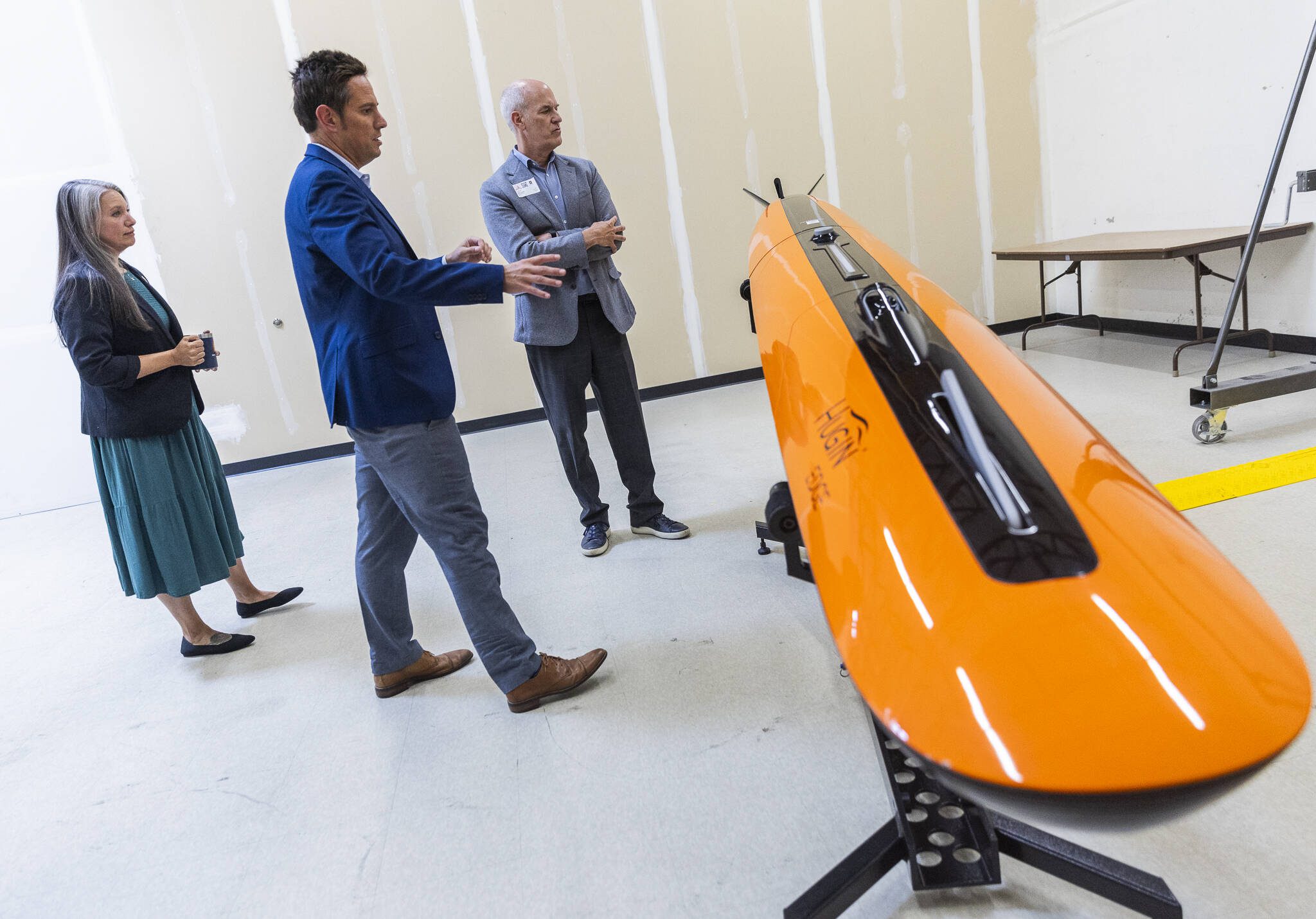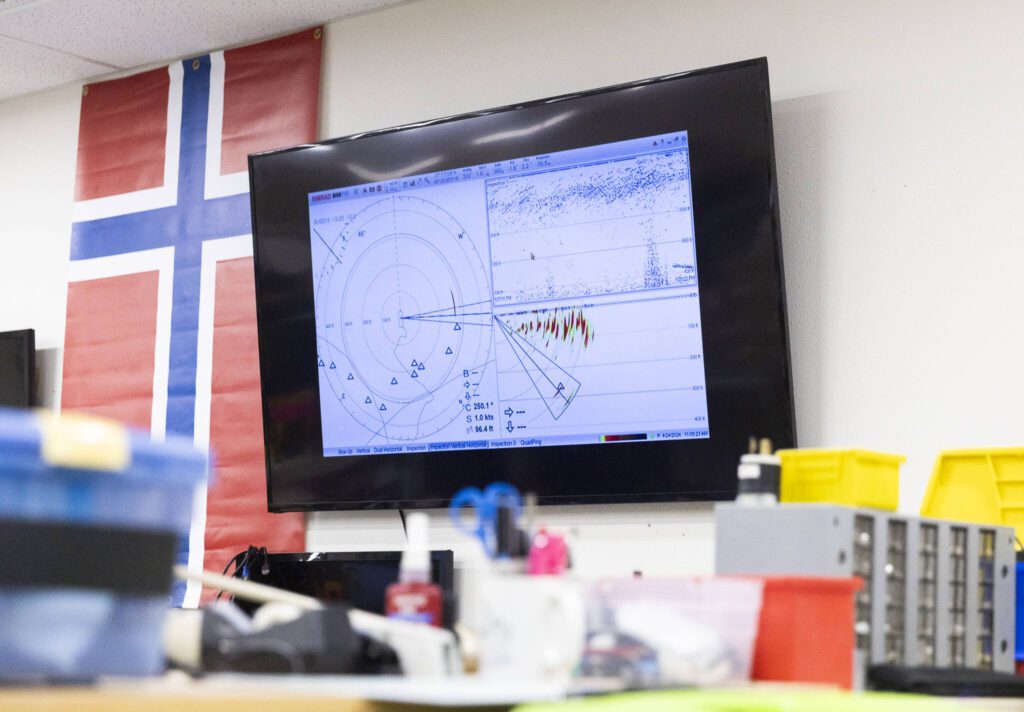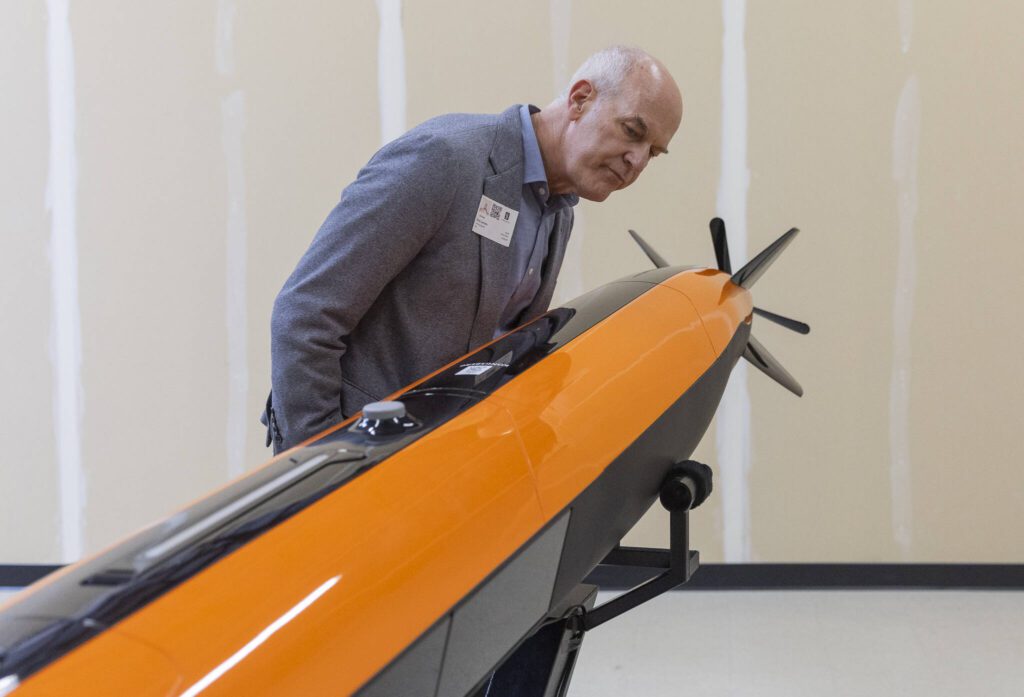LYNNWOOD — U.S. Rep. Rick Larsen, D-Everett, met with Norwegian tech company Kongsberg Discovery on July 31 to discuss plans of producing autonomous underwater vehicles at Kongsberg’s U.S. headquarters in Lynnwood.
Kongsberg’s line of autonomous underwater vehicles, called HUGIN, are only manufactured in Norway right now, but the company’s biggest customer is the U.S. government, with equipment going to the U.S. Department of Defense and National Oceanic and Atmospheric Administration.
The company’s decision to start production in the U.S. comes from an increase in demand from the defense sector, a recent press release stated, with the U.S. Navy wanting to utilize the unmanned underwater vehicles.
“We aim to strengthen our U.S.-based supply chain and enhance our responsiveness to the evolving needs of our government and commercial customers,” Martin Wien Fjell, president of Kongsberg Discovery, said in a press release. “This demand has increased as global tension has risen.”
While the company plans to start production out of its existing facility in Lynnwood, Kongsberg is looking for a larger, permanent manufacturing space of over 10,000 square feet within close proximity to Puget Sound, said Jake Sobin, Kongsberg’s director of government relations.
The Norwegian company asked Larsen for help identifying contracts with ports in Congressional District 2, which includes Everett, Anacortes and Bellingham.
Before touring Kongberg’s facility on July 31, Larsen asked the basic yet glaring question, “Why Washington?”
Kongsberg’s answer: easy access to deep, protected waters.
“Florida was on the list,” Sobin said. “Then we quickly said, ‘No, thank you.’”
HUGIN vehicles are designed for deep-water missions, with the largest model, the HUGIN Endurance, able to function at a depth of almost 20,000 feet. The Superior model, the next biggest HUGIN vehicle, which Kongsberg plans to build at the Lynnwood facility, is over 21 feet long and can also work at depths of almost 20,000 feet, but with a shorter battery length of 72 hours.
With long-range sensors, the subs can map out ocean floors, coral reefs and even the undersides of ice sheets.
“We do have a professor in Scotland that takes her HUGIN AV (autonomous vehicle) and she brings it under ice,” Sobin said. “She’ll scan the ice sheets over the years to see the melting ice, really cool research.”
Roughly 50% of Kongberg’s customers are in the commercial sector, Sobin said, which include industries like gas and oil. But the company is well known in the commercial fishery world, with its SIMRAD sonar technology used among fishing vessels around the world. Production for the HUGIN vehicles is slated to begin in 2026.
Eliza Aronson: 425-339-3434; eliza.aronson@heraldnet.com; X: @ElizaAronson.
Eliza’s stories are supported by the Herald’s Environmental and Climate Reporting Fund.
Talk to us
> Give us your news tips.
> Send us a letter to the editor.
> More Herald contact information.




























